[:en]With a long history that goes back well beyond the Middle Ages, the city of Carentan, due to its unique geographical location in the heart of the marshes of the lower Cotentin, was closely involved in the bloody battles that ensured the success of the American landings in Normandy in June 1944. By chance of history, it was a brand new unit of the American Army, a pioneer and elitist branch, that of the parachutists who came from the sky to surprise the Nazi occupiers, which liberated the city after 5 days of fierce fighting. The 101st Airborne Division, created only two years earlier, was composed exclusively of volunteers, young guys barely 20 years old from all the states of the Union. Of their own free will, they had agreed to put their lives on hold to save the world from a barbarism called Nazism. Hundreds of them had to pay a high price to give Carentan, Normandy and France its freedom. Many of them have been sleeping in the cemeteries of Normandy ever since. The others were able to re-embark after the war to resume their lives in America. Carentan has not forgotten either the sacrifices or the friendship linked from the very first hours of the liberation with the sons of Uncle Sam. The German occupier had barely been driven out when the Norman and American authorities set to work, under the impetus of the indefatigable Mayor Albert Joret, supported by his new friend, the provisional American governor of the liberated territories, attached to the 101st Airborne, Major Maginnis, to rebuild Carentan and provide it with water, electricity and food. These two men found in Max Taylor, the commanding general of the 101st, an unfailing support. A distinguished linguist and Francophile, Taylor spoke French to the people of Carentan who gathered on June 20, 1944 at Place de la République for the second of three medal ceremonies organized to honor the heroes of Carentan. On June 15, the city had just been cleared of the last snipers and Taylor honored his division by awarding the Silver Star to its four regimental commanders. Already, the children of Carentan were flocking in their Sunday best, ribbons in their hair and bouquets in their hands to thank their liberators. Jean Le Poitevin, Sylviane Lefevre and Danielle Laisney, under the watchful eye of Mrs. Haugard and Mrs. Truffaut, were not going to miss any of these festive gatherings with GI's who were quick to fraternize and to stuff the children's pockets with candy and this curious paste called "gum". On June 23, in the middle of the ceremony, two German shells fell on the square, wounding 19 civilians and killing 5, including little Danielle, only 4 years old. These memories, this Norman-American friendship, this respectful affection towards the prestigious 101st Airborne Division will find in the representation cast in bronze of the historical photo of the 4 colonels decorated by Taylor, under the eyes of little Danièle Laisney, the strength of the symbol, the power of the emotion to cross the times with a simple message of peace, humanity and fraternity
[:fr]Riche d’une longue histoire qui remonte bien au-delà du Moyen âge, la ville de Carentan, de par sa situation géographique singulière au coeur des marais du bas Cotentin, a été étroitement mêlée aux sanglants combats qui ont assuré la réussite des débarquements Américains en Normandie en juin 1944. Hasard de l’Histoire, c’est une toute nouvelle unité de l’Armée Américaine, une branche pionnière et élitiste, celle des parachutistes venus du ciel surprendre l’occupant Nazi, qui a libéré la ville au terme de 5 jours de combats acharnés. La 101st Airborne Division créée seulement deux ans plus tôt, était exclusivement composée de volontaires, de jeunes gars d’à peine 20 ans venus de tous les Etats de l’Union. De leur plein gré, ils avaient accepté de mettre leurs vies entre parenthèses, le temps de délivrer le monde d’une barbarie nommée Nazisme. Par centaines, ils devaient payer le prix fort pour redonner à Carentan, à la Normandie, à la France, sa liberté. Nombreux sont ceux qui dorment depuis d’un éternel sommeil dans les cimetières de Normandie. Les autres ont pu, la guerre terminée, rembarquer pour reprendre en Amérique le fil de leur vie. Carentan n’a pas oublié, ni les sacrifices ni l’amitié liée dès les toutes premières heures de la libération avec les fils de l’Oncle Sam. L’occupant Allemand à peine chassé que les autorités Normandes et Américaines se mettaient au travail, sous l’impulsion de l’infatigable Maire Albert Joret, soutenu par son nouvel ami, le gouverneur américain provisoire des territoires libérés, rattaché à la 101st Airborne, le Major Maginnis, pour reconstruire Carentan, l'alimenter en eau, en électricité, en nourriture. Ces deux hommes trouvaient en Max Taylor, le général commandant la 101st, un soutien sans faille. Linguiste et Francophile distingué, Taylor haranguait en français les Carentanais rassemblés le 20 juin 1944 Place de la République pour la deuxième des trois cérémonies de remise de médailles organisées pour honorer les héros de Carentan. Dès le 15 juin, la Ville à peine nettoyée des derniers snipers, Taylor honorait sa division en remettant la Silver Star à ses quatre commandants de régiments. Déjà, les enfants de Carentan se pressaient dans leurs habits du dimanche, rubans dans les cheveux et bouquets à la main pour remercier leurs libérateurs. Jean Le Poitevin, Sylviane Lefevre ou Danielle Laisney n’allaient, sous le regard vigilant de mesdames Haugard et Truffaut, manquer aucun de ces rassemblements festifs avec des GI’s prompts à fraterniser et à bourrer les poches des enfants de bonbons et de cette curieuse pâte appelée « gum ». Le 23 juin, en pleine cérémonie, deux obus allemands s’abattaient sur la place, blessant 19 civils, en tuant 5 dont la petit Danielle seulement âgée de 4 ans. Ces souvenirs, cette amitié Normande-Américaine, cette affection respectueuse envers la prestigieuse 101st Airborne Division vont trouver dans la représentation moulée dans le bronze de l’historique photo des 4 colonels décorés par Taylor, sous le regard de la petite Danièle Laisney, la force du symbole, la puissance de l’émotion pour traverser les époques avec un simple message de paix, d’humanité et de fraternité. [:]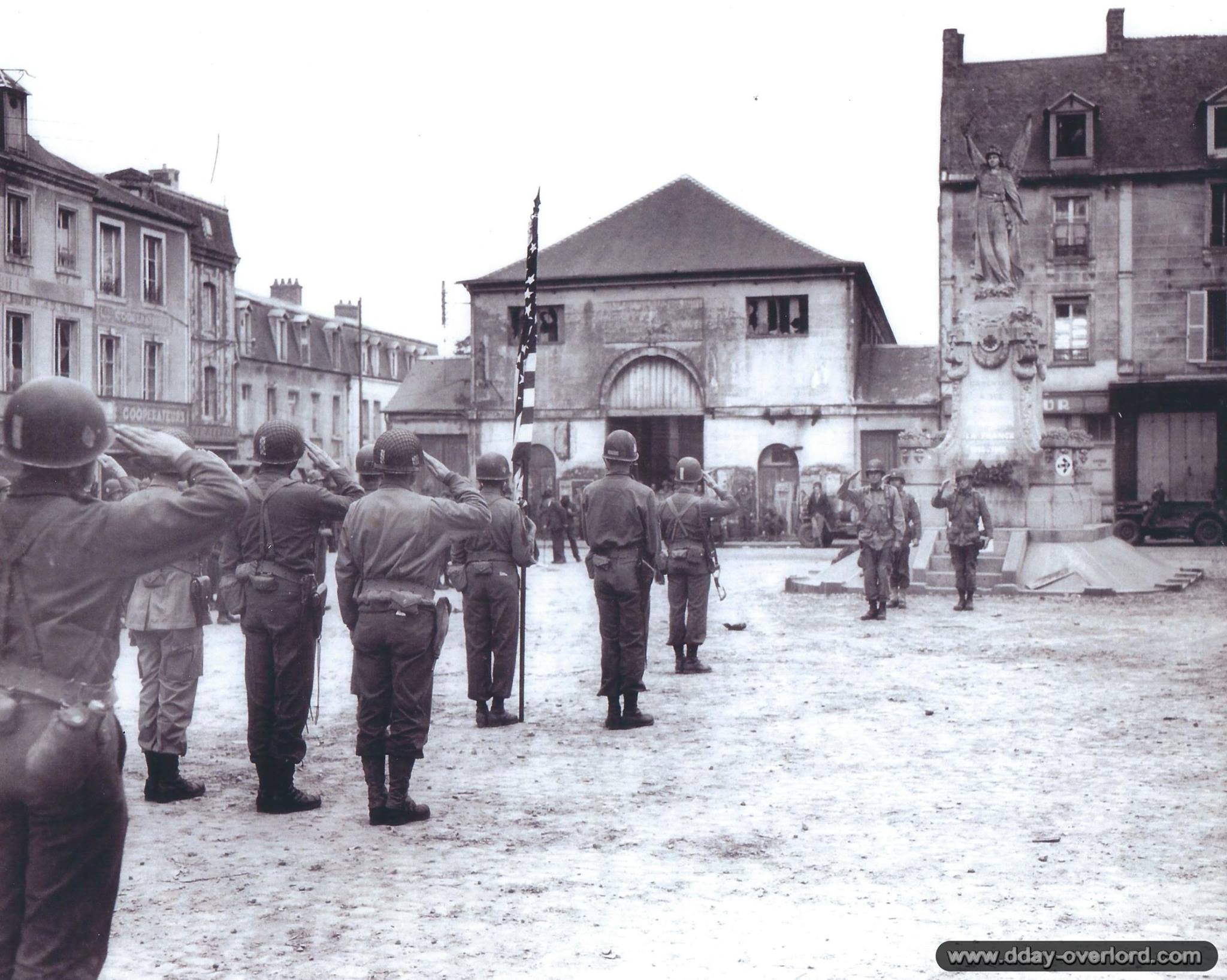
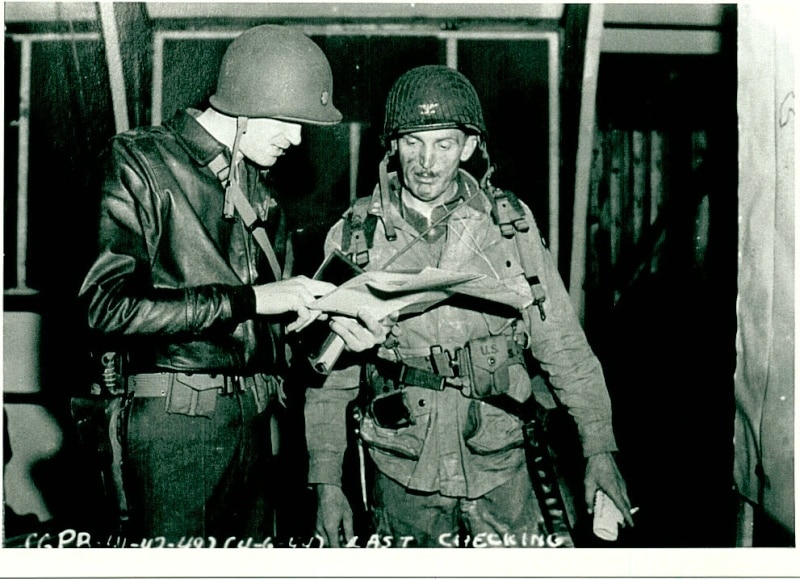

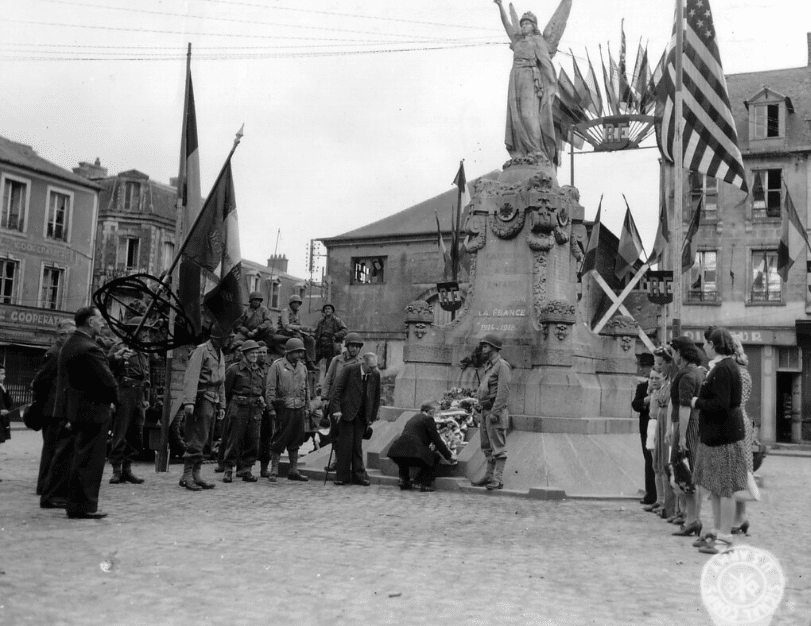
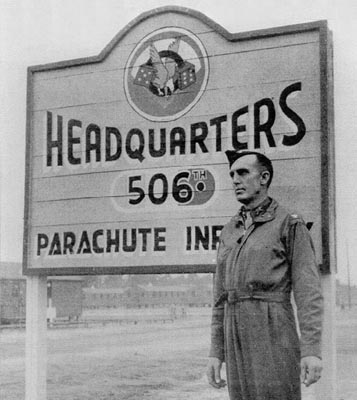
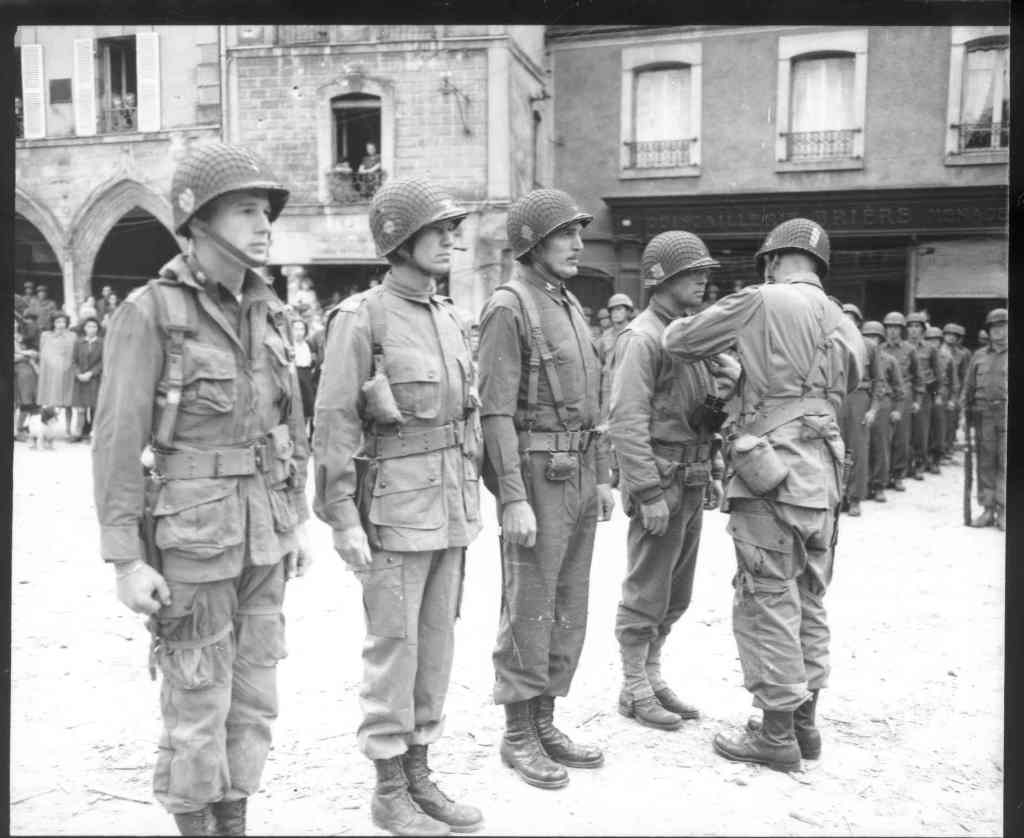
[:en]The statue of the 4 colonels is destined to become a marker, a reference point for the many visitors who come every year from all over the world to remember and honor the heroes of the liberation of Normandy, but also of France and Europe. Normandy, and Villedieu les Poeles in La Manche have world-renowned goldsmiths in the art of casting. Cornille-Havard de Villedieu les Poêles are the creators and founders of impressive bronze creations, statues but also bells, including those of the prestigious Notre Dame de Paris Cathedral. It is to these foundry artists that the task was entrusted to realize at scale 1, life-size, and with the greatest realism, the statue of this immortal scene showing General Taylor decorating his four colonels standing at attention Place de la République on June 15, 1944. The task is immense, and the mission sacred. It requires a substantial outlay, 350,000 Euros, which the Carentan community would not be able to afford. This is why an appeal for donations and patronage is launched, via social networks, to raise the sum allowing the realization not of an umpteenth statue, but a realistic testimony, accessible and understandable to the greatest number, a perfect symbol of the commitment of the 101st Airborne for the freedom of Carentan, Normandy, France.[:fr]La statue des 4 colonels est appelée à devenir un marqueur, un point référence pour les nombreux visiteurs qui viennent chaque année des quatre coins du monde se rappeler et honorer les héros de la libération de la Normandie, mais aussi de la France et de l’Europe. La Normandie, et Villedieu les Poeles dans la Manche disposent d’orfèvres mondialement reconnus dans l’art de la fonderie. Cornille-Havard de Villedieu les Poêles sont les créateurs et fondeurs d’impressionnantes réalisations en bronze, statues mais aussi cloches, dont celles de la prestigieuse cathédrale Notre Dame de Paris. C’est à ces artistes de la fonderie qu’a été confiée la tâche de réaliser à l’échelle 1, grandeur nature, et avec le plus grand réalisme, la statue de cette scène immortelle qui montre le Général Taylor décorant ses quatre colonels au garde à vous Place de la République le 15 juin 1944. La tâche est immense, et la mission, sacrée. Elle demande une mise de fond conséquente, 350 000 Euros, que la collectivité ne saurait supporter. C’est pourquoi un appel aux dons et au mécénat est lancé, via les réseaux sociaux, pour réunir la somme permettant la réalisation non pas d’une énième statue, mais d’un témoignage réaliste, accessible et compréhensible au plus grand nombre, symbole parfait de l’engagement de la 101st Airborne pour la liberté de Carentan, de la Normandie, de la France.[:]
[:en]On June 13, 1944, after 4 days of bloody fighting, supported by the armored vehicles of the 2nd Armored Division, the exhausted paratroopers of the 101st Airborne definitively pushed back the Nazi pretensions of the Fallschirmjaeger and the SS on Carentan. Carentan was broken, Carentan was martyred, but Carentan was liberated. On June 15, Carentan was able to witness the first taking up of arms, a pretext for the first medal ceremony on the Place de la République, which still bore the scars of the bombing. General Maxwell D Taylor, commander of the Screaming Eagles, thanked and celebrated the very first feat of arms of his young division by awarding the Silver Star to the four commanders of the 4 regiments that made up the 101st, Lieutenant Colonel John Michaelis, Commanding Officer of the 502nd Parachute Infantry, Colonel Howard R Johnson, Co of the 501st PIR, Colonel Robert F Sink, CO of the 506th PIR, and Joseph Harper, CO of the 327th/401st Glider Infantry Regiment. The image would travel around the world and symbolize the sacrifices of the division to liberate Carentan. These four colonels would have varied fates within the glorious 101st. John Michaelis was seriously wounded in the Netherlands in September 1944. Howard Johnson died at the head of his beloved Geronimos in the Netherlands in early October 1944. Robert Sink, a pioneer paratrooper, and Bud Harper survived the conflict and led their respective regiments to Berchtesgaden. Until the end of July 1944, death was to strike the inhabitants of Carentan in all its forms. A festive moment, the medal ceremony organized on June 23 at the Place de la République turned into a nightmare. Two German shells fell on the square crowded with soldiers and civilians. The GIs gathered, flattened on the ground. The civilians do not see the blow coming. Five were killed, including little Danielle Laisney and Alain Leroux. 19 other civilians were wounded. In honor of these men and the soldiers they commanded, several hundred of whom fell for the liberation of the city, Carentan wishes to materialize and concretize the memory of heroes who cannot be forgotten.[:fr]Le 13 juin 1944, au terme de 4 jours de combats sanglants, soutenus par les blindés de la 2nd Armored Division, les parachutistes exténués de la 101st Airborne repoussaient définitivement les prétention Nazis des Fallschirmjaeger et des SS sur Carentan. Carentan brisée, Carentan martyrisée mais Carentan libérée, pouvait observer dès le 15 juin une première prise d’armes, prétexte à une première remise de médailles sur une place de la République portant encore les stigmates des bombardements. Le Général Maxwell D Taylor, commandant des Screaming Eagles, remerciait et célébrait le tout premier fait d’arme de sa jeune division en décernant la Silver Star aux quatre commandants des 4 régiments qui constituaient la 101st, le Lieutenant Colonel John Michaelis, Commanding Officer du 502nd Parachute Infantry, le colonel Howard R Johnson, Co du 501st PIR, le Colonel Robert F Sink, CO du 506th PIR, et Joseph Harper, CO du 327th/401st Glider Infantry Regiment. L’image allait faire le tour du monde et symboliser les sacrifices de la division pour libérer Carentan. Ces quatre colonels connaîtront des destins variés au sein de la glorieuse 101st. John Michaelis sera grièvement blessé aux Pays-Bas en septembre 44. Howard Johnson périra à la tête des ses chers Geronimos lui aussi aux Pays-Bas début octobre 44. Robert Sink, pionnier parachutiste, et Bud Harper survivront au conflit et mèneront leurs régiments respectifs jusqu’à Berchtesgaden. Jusqu’à la fin juillet 44, la mort va frapper indifféremment et sous toutes ses formes les habitants de Carentan. Moment festif, la remise de médailles organisée le 23 juin place de la République tourne au cauchemar. Deux obus allemands vont tomber sur la place bondée de soldats et de civils. Les GIs rassemblées, s’aplatissent au sol. Les civils ne voient pas le coup arriver. Cinq sont tués, dont la petite Danielle Laisney et Alain Leroux. 19 autres civils seront blessés. En honneur de ces hommes et des soldats qu’ils commandaient, dont plusieurs centaines sont tombées pour la libération de la ville, Carentan souhaite matérialiser et concrétiser le souvenir et la mémoire de héros que ne sauraient tomber dans l’oubli.[:]
Copyright ©2025 Réalisé par Alexandre Maurouard Freelance